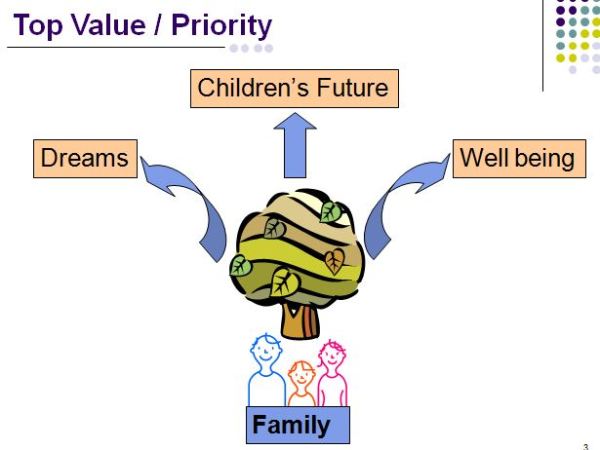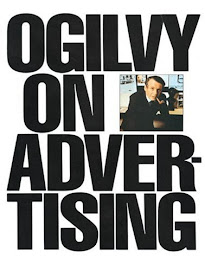while family planning can eventually take the form of real and tangible products like condoms or pills which has real brand names and packages that can be bought in retail and drug stores, what the effort intended to do was to get the target audience to buy in or believe in "family planning" and for the same target audience to decide to use any one of family planning methods available.
previous efforts have been done in the past decades to promote the use of family planning behind which millions of US$ have been spent. advertising and other efforts were also used like working with the medical and governmental health organizations or agencies.
coming from a background of working only with hard core mass consumer marketing and advertising, we employed and applied the principles, tools and thinking used in selling products like toothpaste, detergents and sanitary napkins on to the product called "family planning".
based on tracking data comparing pre and post, the effort has been very successful, able to achieve historical highs on awareness on family planning and even increased usage.
this will deal on the very first part of the whole marketing and advertising effort on family planning that was conducted in the country.
first to be conducted were a series of qualitative research, focus group discussions in metro manila, davao and cebu among several groups of women and men with varying age groups. and marital status. the qualitative research was done to gain possible consumer insights for the development of advertising that will promote family planning use, advocacy work and public relations efforts. equally important, the qualitative researches were conducted to serve as inputs for the design of the quantitative research that was going to be done nationwide.these charts are only a small portion of the whole research but it is quite telling on where the minds and hearts of pinoys, specially filipina women are in relation to family planning to themselves and their families.the first part of the FGDs (focus group discussions) was a discussion on values and dreams of the respondents for their families.an interesting methodology was designed. a drawing of a tree with roots, trunk and leaves were placed on the board. respondents were given post it pads where they were asked to write on them the values they believe in, those that are important for them or their dreams. they were asked to put the post its on the board, place it anywhere inside or outside the tree. once everyone has done this, their answers were processed and discussed with the moderator.where the respondents placed the post it in relation to the tree had meaning to them. post its placed outside the tree meant whatever was written there was not very important for them. those placed on the leaves were more important and down to the roots. to the respondents, those they placed on the roots were the most important for them."why pinoys who are single or married need family planning in their relationship", click here to read full article: http://bit.ly/ApfPVi
qualitative research like focus group discussions are very helpful in developing advertising campaigns, specifically in crafting the consumer insight. but because we are all consumers ourselves, we find it easy to say that we know the consumer. using our own experiences and perceptions as legitimate target audience attitudes and experiences, there is the temptation to use these in the advertising that we develop.
and it is this goal of having consumer information that is thick, robust and expansive that the design of the FGDs was made of.
going in we assumed that pregnancy is most probably one of the most important events for couples who are in a relationship. we knew that getting pregnant will involve very major changes in a person's life, if not for men, it is certainly so for women. we wanted to know what aspects of their lives will be affected by pregnancy.
it is this reason that the first topic discussed in the FGD was about the respondent's values or those that are important to them. we wanted to get some base data or information about the order of things in their lives as far as values and priorities were concerned.
in getting at these, the direction given was we wanted some projective technique to be used. we felt that direct questions will not do and that a projective technique (in this one, respondents were asked to stick their post its where they wrote their values on a drawing of a tree) will get us a lot more.
projective techniques make it easier for respondents to respond to the questions and the ensuing discussion. more importantly, the discussion afterwards in explaining what they wrote and why they placed the post it in that particular spot in the tree would be good start points for the moderator to probe the respondents.
the second question, "what will you think or feel if you find out you are pregnant today?" was meant not only to come as close as we can to mimicking real life situations that couples experience, it was also meant to shock and put the respondent out of kilter. we wanted to be controversial at this very early stage of the FGD. actually the way this was described was, we wanted to get "violent" reactions from the respondents.
the theory was getting controversial or eliciting violent reactions from the respondents is one of the best ways to get thick and robust responses from them. we were hoping we will push the respondents to extremes and corners that will enable them to think better and yes, say a lot more than the usual.
from these thick and robust responses, we will then collate them and form a cohesive and sensible whole from which we can draw the consumer insights that will be used for the advertising and other marketing efforts we were going to do for family planning.
the design worked very well.
you could actually feel the tension and excitement among the respondents after the second question was asked. all of them became very livid and attentive and resulted to them giving excellent answers to questions or opinions to issues brought about by the moderator or by their fellow respondents.
key here is tailor fitting the design of the research to the goals you want to get from the research. it is also important to understand the topic that you are researching. we knew pregnancy is a sensitive topic for many pinoys, specially women. talking about pregnancy will also need talking about sex and their sexual practices. these are topics that many filipinas do not usually want to talk about specially among strangers. being a sensitive topic demanded a design that overcomes this as a barrier.
~~~~~~~
more on this next....
more on this next....















